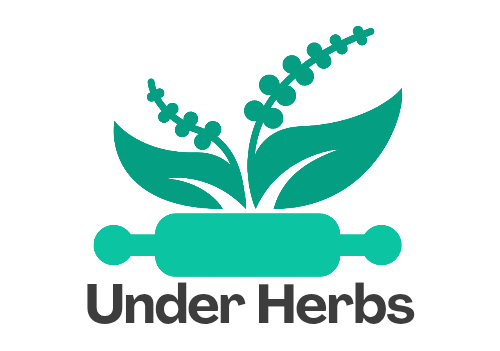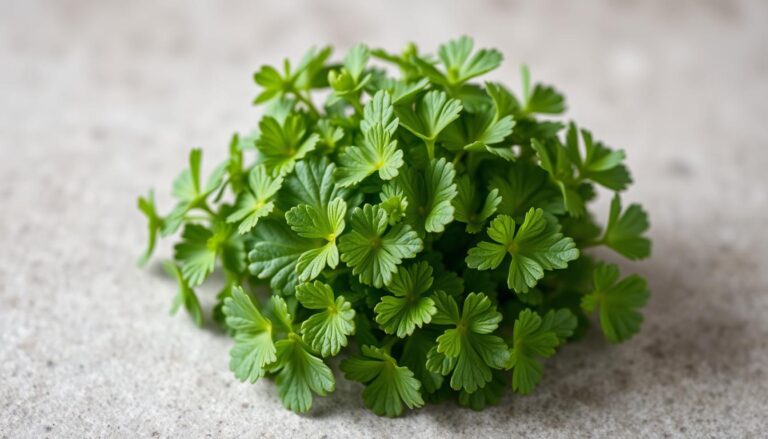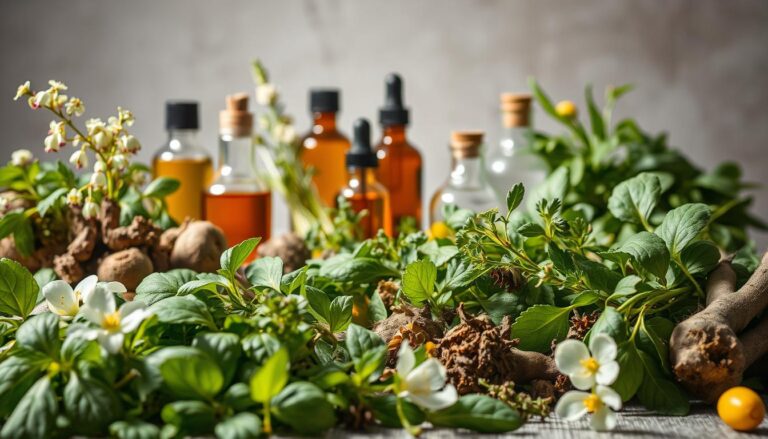Spices Explained: Are They Healthy or Harmful?
Can the spices in your kitchen cabinet be a double-edged sword, offering both flavor and potential health risks? The use of spices dates back centuries. They were not just for adding flavor to food, but also for their perceived medicinal properties.
The question remains, are spices good for you? While some spices are known to have antioxidant properties and anti-inflammatory effects, others may cause adverse reactions in certain individuals. Understanding the health impacts of spice consumption is crucial for making informed decisions about what we eat.
Key Takeaways
- The historical use of spices for health benefits
- The potential health risks associated with certain spices
- The importance of understanding spice consumption
- Antioxidant properties of certain spices
- Potential anti-inflammatory effects of spices
The Ancient World of Culinary Spices
For centuries, spices have been key in cooking traditions around the world. They give us a peek into the cultures and histories of different societies. Spices have shaped how people cooked, traded, and interacted.
Historical Significance of Spices
Spices have always been valuable, not just for taste but also for keeping food fresh and treating illnesses. The spice trade helped shape global commerce. Many spices were used as money or traded for other valuable goods.
As historian and food experts note, the need for spices led to exploration and the creation of trade routes. These routes connected far-off lands and cultures.
“Spices were among the most valuable commodities traded in the ancient world, with some, like saffron and cinnamon, being worth their weight in gold.”
Cultural Importance Across Civilizations
Spices have been vital in the cultural and religious practices of many societies. In ancient India, spices were used in Ayurvedic medicine and religious rituals. In Europe, they flavored food and showed wealth.
The cultural importance of spices shows their lasting impact on human society. As modern research continues to uncover, spices are also good for our health. This mix of cultural heritage and scientific proof highlights spices’ role in our diets today.
What Exactly Are Spices? Composition and Categories
Spices are important in cooking and health. They come from different parts of plants, like seeds, bark, roots, and berries. This makes them different from herbs, which are plant leaves.
Defining Spices vs. Herbs
Herbs, like basil, are plant leaves. Spices, such as cinnamon, come from other parts. This difference affects how we use them in cooking and culture.
Chemical Compounds in Spices
Spices are full of bioactive compounds. These give them flavor, aroma, and health benefits. They include antioxidants and anti-inflammatory agents that are good for us.
Common Categories of Cooking Spices
Spices are grouped by their origin, flavor, or plant part. We have sweet spices like cinnamon and nutmeg. There are also pungent spices like ginger and garlic, and aromatic spices like cardamom and cloves. Knowing these groups helps us use spices for taste and health.
Learning about spices and their types helps us see why spices are healthy. They make our food taste better and more nutritious.
Are Spices Good Foods For You? The Scientific Perspective
Spices do more than just add flavor. They also have health benefits. Scientists are studying how spices can improve our diet. They look at their nutritional value and active compounds.
Nutritional Profile of Common Spices
Even though we use spices in small amounts, they add a lot to our meals. Many spices are full of antioxidants, vitamins, and minerals. For example, cinnamon is packed with manganese, and turmeric has iron.
| Spice | Nutritional Highlights |
|---|---|
| Cinnamon | Rich in manganese, a mineral essential for bone health and metabolism. |
| Turmeric | Contains iron and curcumin, a compound with potent anti-inflammatory properties. |
| Ginger | High in vitamin C and magnesium, contributing to its anti-inflammatory effects. |
Bioactive Compounds and Their Effects
Spices have compounds that are good for our health. Curcumin in turmeric fights inflammation and is an antioxidant. Capsaicin in cayenne pepper can help with pain and improve blood flow.
Adding spices to our meals can make them taste better and be healthier. By knowing what’s in spices, we can choose better foods. This can help us stay healthy and lower disease risks.
The Impressive Health Benefits of Spices
Spices do more than just add flavor to our food. They are also valued for their health benefits. For centuries, people have used spices to make food taste better and to stay healthy.

Anti-inflammatory Properties
Many spices have anti-inflammatory properties. This can help lower the risk of chronic diseases. For example, turmeric has curcumin, which fights inflammation and protects cells.
Monica Auslander Moreno, a dietitian, says, “Herbs and spices fight inflammation and reduce damage to your body’s cells.” They are full of phytochemicals.
Antioxidant Effects
Spices are also full of antioxidants. These protect our bodies from damage caused by oxidative stress. Antioxidant-rich spices like cinnamon, ginger, and cloves help fight free radicals.
This can lower the risk of heart disease and cancer.
Digestive Health Improvements
Certain spices can also help with digestion. For instance, ginger is known to aid digestion and ease nausea and indigestion. Adding these spices to our meals can boost our digestive health.
By using a variety of spices in our meals, we can make our food taste better. We also get health benefits like fighting inflammation, reducing oxidative stress, and improving digestion.
Spices and Disease Prevention
Adding spices to your meals can make food taste great and boost your health. Spices have been used for ages to flavor food and for their health benefits. Studies now show that many spices can help prevent chronic diseases.
Cardiovascular Health Benefits
Spices like turmeric, ginger, and garlic are good for your heart. Turmeric has curcumin, which fights inflammation and lowers heart disease risk. Garlic helps lower cholesterol and prevent blood clots, reducing heart attack and stroke risks.
Key Cardiovascular Benefits of Spices:
- Anti-inflammatory effects
- Cholesterol reduction
- Prevention of blood clots
Cancer-Fighting Properties
Some spices can fight cancer. Turmeric’s curcumin stops cancer cells from growing and lowers cancer risk. Cayenne pepper has capsaicin, which also fights cancer.
“The active compounds in spices have been shown to have anti-cancer effects, making them a valuable addition to a healthy diet.”
Blood Sugar Regulation
Spices like cinnamon help control blood sugar. Cinnamon makes your body more sensitive to insulin, lowering type 2 diabetes risk. Adding these spices to your diet can help manage diabetes.
| Spice | Health Benefit |
|---|---|
| Turmeric | Anti-inflammatory, anti-cancer properties |
| Cinnamon | Blood sugar regulation |
| Ginger | Anti-inflammatory, digestive health |
Top 10 Healthiest Spices and Their Benefits
Some spices are more than just flavor enhancers. They offer health benefits too. These spices can make your food taste great and improve your health.
Turmeric and Curcumin
Turmeric is packed with curcumin, an antioxidant. It fights inflammation well. Studies say it might ease pain and slow Alzheimer’s disease.
Cinnamon and Blood Sugar
Cinnamon helps control blood sugar. It lowers glucose and boosts insulin sensitivity. This is good for people with diabetes.
Ginger and Inflammation
Ginger fights inflammation and pain. It also helps with digestion and nausea.
Garlic and Heart Health
Garlic supports heart health. It lowers cholesterol and blood pressure.
Cayenne and Metabolism
Cayenne pepper boosts metabolism. It aids in weight loss and has anti-inflammatory effects.
Other Powerful Healing Spices
Cumin aids digestion. Paprika is full of antioxidants. Here’s a table of their health benefits.
| Spice | Health Benefit | Potential Use |
|---|---|---|
| Turmeric | Anti-inflammatory | Pain relief, Alzheimer’s prevention |
| Cinnamon | Blood sugar regulation | Diabetes management |
| Ginger | Anti-inflammatory, digestive aid | Pain relief, nausea alleviation |
| Garlic | Heart health support | Cholesterol reduction, blood pressure lowering |
| Cayenne | Metabolism boost | Weight loss aid |

Adding these spices to your meals can greatly improve your health. Knowing their benefits helps you choose the right spices and use them well.
Potential Harmful Effects of Spices
Spices are good for health, but they can harm some people. They might affect the immune system. Knowing these risks helps us enjoy spices safely.
Allergic Reactions and Sensitivities
Some people react badly to certain spices. Cayenne pepper or paprika can cause allergic reactions. Symptoms can range from mild discomfort to severe reactions, including hives, itching, or difficulty breathing. If you think you’re allergic to a spice, see a doctor.
Drug Interactions with Spices
Some spices can mess with medications. Turmeric and ginger can affect blood thinners. This can change how your body reacts to drugs. Always tell your doctor about the spices you eat, especially if you’re on medication.
Toxicity Concerns with Excessive Consumption
Eating too much of some spices can be harmful. Nutmeg, for example, can cause problems if eaten in large amounts. Moderation is key when using spices. If you’re using them for health reasons, talk to a doctor first.
In conclusion, spices are good for us, but we need to watch out for risks. Being careful with spice use and listening to our bodies helps avoid problems.
tag.
6. Keyword Placement Matrix: We will ensure that the keyword density does not exceed 2%, adhering to SEO best practices.
7. Readability: We will break paragraphs into smaller sections and verify that the Flesch Reading Ease and Flesch-Kincaid Grade level are appropriate.
8. Text Size: We will adhere to the recommended text size of 250 words for Section 9.
8.1. Headings: We will take into account the H2 and H3 headings specified for Section 9.
Let’s proceed with crafting the content for Section 9.
## Step 1: Writing the H2 Heading and Introductory Paragraph
The H2 heading is “Common Myths About Spices and Their Health Effects.”
## Step 2: Crafting the Introductory Paragraph
“The world of spices is often shrouded in myths and misconceptions, making it challenging to discern their actual health benefits. Spices have been used for centuries not only to add flavor to food but also for their medicinal properties. However, misinformation and a lack of understanding often lead to confusion about their health effects.”
## Step 3: Writing H3 Headings and Their Respective Content
The two H3 headings are “Debunking Spice Misconceptions” and “Separating Fact from Fiction.”
### Debunking Spice Misconceptions
“One common myth is that spices are only for flavor. In reality, many spices have potent health benefits. For instance,turmeric contains curcumin, a compound with powerful anti-inflammatory properties. Another misconception is that spice consumption is linked to various health risks without considering the context of consumption.”
### Separating Fact from Fiction
“To understand the true health effects of spices, it’s crucial to separate fact from fiction.Adrienne Youdim recommends consuming spices in their natural form rather than as supplementsdue to the lack of regulation in the supplement industry. A comparison of the nutritional benefits and potential risks of common spices can help clarify their health effects.”
## Step 4: Creating a Table
Let’s create a table to compare some common spices and their health benefits.
| Spice | Health Benefit | Potential Risk |
|---|---|---|
| Turmeric | Anti-inflammatory | Excessive consumption may cause stomach upset |
| Cinnamon | Lowers blood sugar | Cassia cinnamon may contain coumarin, a potential toxin in large doses |
| Ginger | Aids digestion | May interact with blood thinners |
## Step 5: Incorporating the Image
We will insert the provided image link into the blog text.

## Step 6: Finalizing the Content
Let’s assemble the content, ensuring it meets the word count and readability criteria.
Common Myths About Spices and Their Health Effects
The world of spices is often shrouded in myths and misconceptions, making it challenging to discern their actual health benefits. Spices have been used for centuries not only to add flavor to food but also for their medicinal properties. However, misinformation and a lack of understanding often lead to confusion about their health effects.
Debunking Spice Misconceptions
One common myth is that spices are only for flavor. In reality, many spices have potent health benefits. For instance, turmeric contains curcumin, a compound with powerful anti-inflammatory properties. Another misconception is that spice consumption is linked to various health risks without considering the context of consumption.
Separating Fact from Fiction
To understand the true health effects of spices, it’s crucial to separate fact from fiction. Adrienne Youdim recommends consuming spices in their natural form rather than as supplements due to the lack of regulation in the supplement industry. A comparison of the nutritional benefits and potential risks of common spices can help clarify their health effects.
| Spice | Health Benefit | Potential Risk |
|---|---|---|
| Turmeric | Anti-inflammatory | Excessive consumption may cause stomach upset |
| Cinnamon | Lowers blood sugar | Cassia cinnamon may contain coumarin, a potential toxin in large doses |
| Ginger | Aids digestion | May interact with blood thinners |
How to Incorporate More Spices in Your Diet
To enjoy the health perks of spices, learn how to use them right in your cooking. Spices can make your meals taste better, smell great, and be more nutritious. They’re a fantastic choice for a healthy diet.

Cooking Methods That Preserve Beneficial Properties
How you cook can affect the nutrients in spices. To keep their good stuff, add spices late in cooking. This way, you save their oils and flavors. For example, adding turmeric or cumin late keeps their anti-inflammatory powers strong.
Spice Combinations for Maximum Health Benefits
Spices work better together for health. Some mixes boost their nutritional value. For instance, turmeric with black pepper makes curcumin more available. Ginger and cinnamon together can also fight inflammation.
- Turmeric + Black Pepper: Enhances curcumin bioavailability
- Ginger + Cinnamon: Reduces inflammation
- Cayenne + Garlic: Boosts cardiovascular health
Daily Spice Consumption Recommendations
Monica Auslander Moreno advises, “Cook with herbs and spices often — and use several at once.” Try to mix different spices in your meals every day. Use about 1/4 to 1/2 teaspoon of spices per serving. But, the right amount depends on your taste and the spice.
By following these tips, you can get the most health benefits from spices. This will improve your overall health and well-being.
Spices in Modern Medicine and Supplements
Modern medicine is now using spices for new treatments and supplements. Spices have been known for their health benefits for centuries. But, new research has made us understand their benefits better.
Medicinal Uses of Spice Extracts
Spice extracts are used for their healing properties. For example, turmeric and curcumin extracts are found in health stores and pharmacies. They are in tablet or capsule form. These extracts help fight inflammation and protect against damage, helping with many health issues.
Supplement Forms and Effectiveness
The success of spice supplements depends on how they are made, how well they are absorbed, and what health needs they meet. It’s important to talk to a doctor before taking spice supplements. Here’s a table comparing different forms of supplements.
| Supplement Form | Bioavailability | Common Uses |
|---|---|---|
| Capsules | Moderate | Anti-inflammatory, antioxidant |
| Powder | High | Culinary, digestive aid |
| Extracts | High | Therapeutic, anti-inflammatory |
Conclusion: Balancing the Benefits and Risks of Spices
Spices have been a key part of cooking for centuries. They add flavor and health benefits. Monica Auslander Moreno says, “Food is an army,” and spices work with other foods for wellness.
Using different spices in your diet can help with inflammation, antioxidants, and digestion. This might lower the risk of chronic diseases. But, be careful of allergies, sensitivities, and drug interactions. Too much can be harmful.
To get the most from spices, mix them in your cooking. This way, you can enjoy a healthy diet. Spices can help improve your overall health and wellness.
FAQ
Are spices good for you?
Yes, spices are good for you. They have compounds that fight inflammation and boost health.
What are the health benefits of spices?
Spices can help in many ways. They reduce inflammation, improve heart health, and may prevent cancer. They also help control blood sugar.
What is the difference between spices and herbs?
Spices come from bark, roots, or seeds. Herbs come from leaves, stems, or flowers.
Can spices help prevent diseases?
Yes, some spices can prevent diseases. Turmeric fights cancer, and cinnamon helps control blood sugar.
How can I incorporate more spices into my diet?
Add spices to your meals. Use them in cooking, sprinkle on food, or make spice teas.
Are there any potential harmful effects of consuming spices?
Yes, too much of some spices can cause problems. They might trigger allergies, interact with meds, or be toxic.
Can spices be used as supplements?
Yes, some spices are sold as supplements. But, always talk to a doctor before using them.
How do I choose the best spices for health benefits?
Choose high-quality, organic spices. They should be rich in good compounds. Ask a doctor or dietitian for advice.
Can spices boost my immune system?
Yes, some spices like ginger and garlic boost the immune system. They help fight off infections.
How do spices promote overall wellness?
Spices are full of nutrients. They reduce inflammation and support the body’s functions.
What are some of the best spices for health?
Top healthy spices include turmeric, cinnamon, ginger, garlic, and cayenne pepper. They offer many health benefits.







